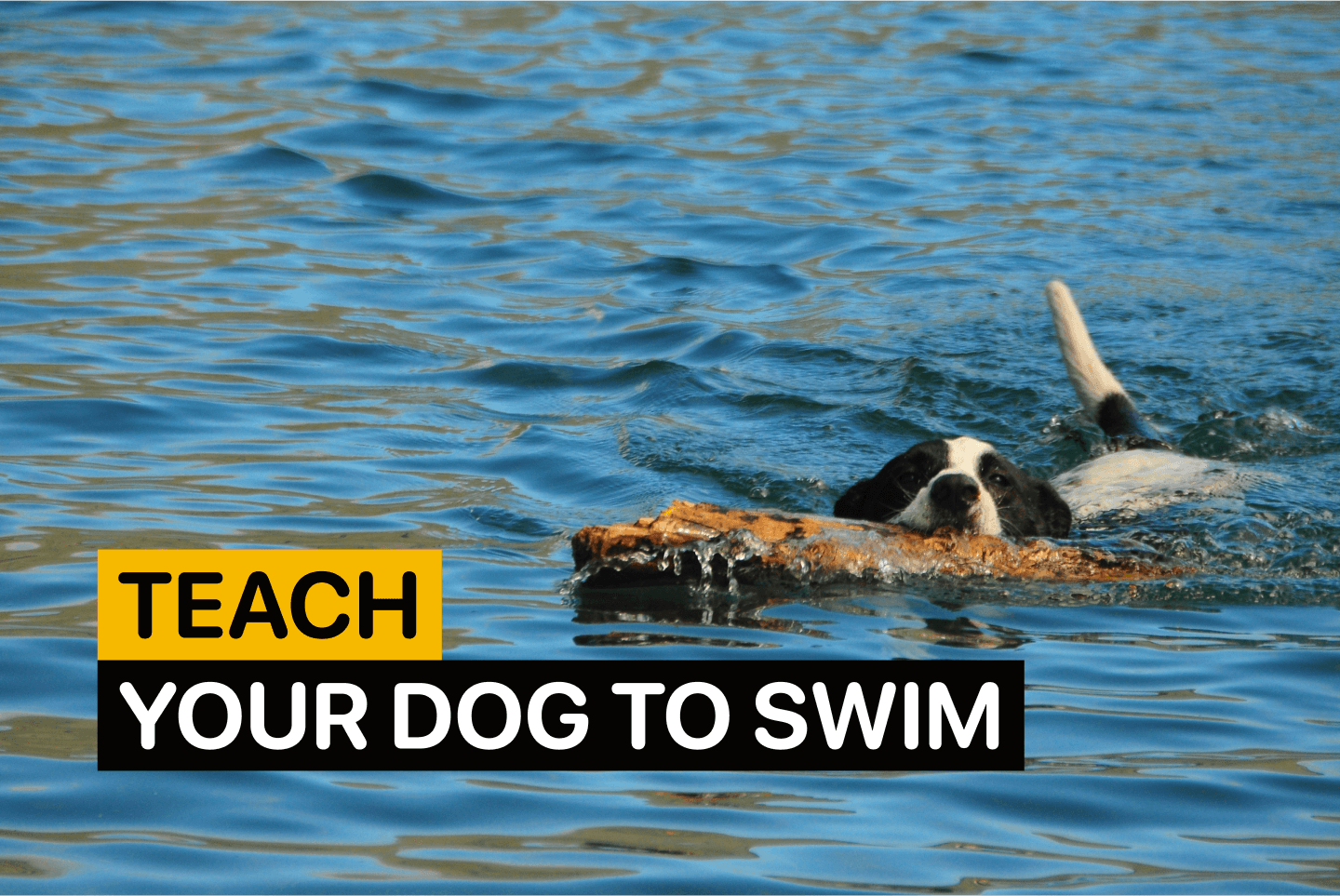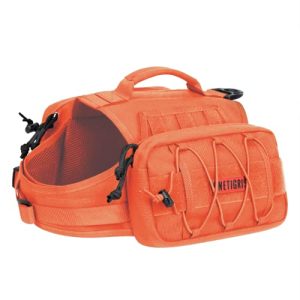Teaching your dog to swim can open up a whole new world of fun and exercise for both of you. But if you’re unsure where to start or worried about your dog’s safety, you’re not alone.
Imagine the joy of watching your furry friend paddle confidently in the water, staying safe while having a blast. You’ll discover simple, step-by-step tips that make teaching your dog to swim easy and enjoyable. Keep reading, and soon your dog will be ready to splash around with confidence!

Credit: pupford.com
Preparing Your Dog For Swimming
Preparing your dog for swimming sets the stage for a safe and fun experience. It helps your dog feel calm and confident near water. Taking time to prepare reduces risks and builds trust between you and your pet.
Choosing The Right Location
Pick a calm and shallow place for your dog’s first swim. Avoid strong currents and deep water. A quiet spot with a gentle slope helps your dog enter the water easily. Look for a clean area free from sharp rocks or debris. A familiar place can make your dog feel more secure.
Essential Safety Gear
Use a dog life jacket for extra safety. It supports your dog and keeps them afloat. Choose a jacket with a handle for easy lifting. Make sure it fits well but is not too tight. Bring a leash designed for water to keep control. Carry fresh water and a bowl to keep your dog hydrated.
Checking Water Conditions
Test the water temperature before letting your dog swim. Cold water can cause cramps or shock. Look for clear water without strong odors. Avoid water with algae or visible pollution. Check for hazards like sharp objects or fishing lines. Always watch for sudden changes in weather or water flow.

Credit: www.naturalfarmpet.com
Introducing Your Dog To Water
Introducing your dog to water can be a fun and rewarding experience for both of you. It’s important to create a calm and positive environment to help your dog feel safe. Taking small, patient steps will build their confidence and make swimming an enjoyable activity.
Starting In Shallow Areas
Choose a shallow spot where your dog can stand comfortably with their paws touching the bottom. This allows them to get used to the feel of water without feeling overwhelmed. You might notice your dog cautiously stepping in and out—this is normal and shows they are assessing the new experience.
If you have a beach or lake nearby, try letting your dog splash around the edges first. A calm pool with a gradual slope works well too. Keep the sessions short and watch for signs of stress, like shaking or whining, so you can adjust accordingly.
Using Positive Reinforcement
Bring your dog’s favorite treats or toys to reward every brave step toward the water. This teaches your dog that water is a source of good things, not fear. Praise and gentle petting also help your dog associate water with your approval.
Try calling your dog with an excited voice and rewarding them as they explore the water. If your dog hesitates, toss a toy just a little into the water to spark their curiosity. Positive reinforcement turns learning into a fun game, making your dog eager to try again.
Encouraging Gentle Entry
Guide your dog into the water slowly, supporting their body if needed. Never force your dog to enter the water quickly; this can cause anxiety and distrust. Letting your dog control the pace gives them confidence and reduces fear.
Try walking alongside your dog into the water or gently carrying them in if they seem unsure. Use calm, soothing words to reassure them. After a few gentle entries, your dog will begin to understand that water is safe and enjoyable.
Teaching Basic Swimming Skills
Teaching basic swimming skills sets the foundation for your dog’s water confidence. It helps your dog learn how to move safely and calmly in water. Start slow and keep sessions short. This prevents stress and makes learning fun.
Supporting Your Dog In Water
Support your dog’s body gently to prevent sinking. Hold under the chest or belly for balance. Keep your hands steady and avoid sudden movements. This helps your dog feel safe and secure.
Use a life vest designed for dogs if needed. It adds buoyancy and builds comfort. Let your dog get used to the vest on land first. Then try it in shallow water.
Guiding Paddling Movements
Encourage your dog to paddle with its legs. Move your hands in a gentle paddling motion underwater. This shows your dog how to kick properly. Use treats or toys to motivate your dog to swim forward.
Practice in calm, shallow water. Watch your dog’s leg movements closely. Offer praise for correct paddling. Avoid forcing your dog, as this can cause fear.
Building Confidence Gradually
Increase water depth slowly as your dog becomes more comfortable. Start with just paws in water. Then move to waist-deep water. Let your dog take breaks often.
Use positive words and rewards to boost confidence. Keep the mood light and playful. Celebrate small successes to encourage progress. Patience and kindness lead to confident swimmers.
Ensuring Safety During Swim Sessions
Teaching your dog to swim is exciting, but safety should always come first. Ensuring your dog stays safe during swim sessions protects them from harm and makes the experience enjoyable for both of you. Paying close attention to signs of tiredness, avoiding risky areas, and managing breaks and hydration can make all the difference.
Monitoring For Fatigue
Dogs can tire quickly in water, even if they seem energetic. Watch your dog’s movements closely—if their strokes become slower or uneven, it’s time to take a break. You might notice your dog paddling harder or trying to reach the edge more often; these are clear signs they’re getting tired.
Have you ever felt exhausted during exercise but kept pushing? Your dog feels the same. Don’t let your enthusiasm override their limits. Regular pauses help prevent accidents caused by fatigue.
Avoiding Hazardous Spots
Not all water areas are safe for dogs. Avoid places with strong currents, steep drop-offs, or thick vegetation that can trap paws. Check the entry and exit points to make sure your dog can easily get in and out.
Think about where you swim—would you feel comfortable there? If you hesitate, your dog probably will too. Scout the location beforehand and keep your dog close near any uncertain zones.
Keeping Hydrated And Rested
Swimming is hard work, and dogs can get dehydrated even while in water. Bring fresh water and offer it often, especially after active swim periods. Don’t rely on lake or pool water—it might be harmful or salty.
Breaks are not just for drinking—they give your dog a chance to relax and cool down. Watch for signs like heavy panting or restlessness, which signal your dog needs a pause. How often do you take breaks during your own workouts? Your dog needs them just as much.
Advanced Tips For Water Fun
Advanced tips can make swimming more fun and safe for your dog. These ideas build on the basics and help your dog enjoy water confidently. Focus on toys, learning to leave the water, and trying deeper spots.
Using Floating Toys
Floating toys keep your dog interested in the water. Choose toys that float well and are easy to grab. Bright colors help your dog see the toy better. Throw the toy a short distance to encourage swimming. Praise your dog when they fetch the toy. This makes swimming a fun exercise, not a chore.
Practicing Exit Techniques
Teach your dog how to get out of the water safely. Show them where steps or ramps are. Practice going in and out several times. Use treats and calm words to guide your dog. This skill prevents panic and keeps your dog safe near water. Make sure your dog feels confident leaving the water.
Introducing Deeper Waters
Move slowly to deeper water as your dog gains confidence. Stay close and support your dog’s body when needed. Let your dog explore at their own pace. Watch for signs of tiredness or stress. Deep water can be fun but also tiring. Keep sessions short and positive to build trust.
Common Challenges And Solutions
Teaching a dog to swim can bring joy and safety, yet some challenges may arise. These common issues can slow progress or cause stress for your pet. Understanding these challenges helps you guide your dog with patience and care.
Fear Of Water
Many dogs fear water at first. The unknown sensation can cause anxiety. Start by introducing your dog to shallow water gently. Let your dog explore at its own pace. Use calm voices and soft praise. Offering treats near the water builds positive feelings. Avoid forcing your dog in the water. Gradual exposure reduces fear and builds trust.
Reluctance To Swim
Some dogs may resist swimming even after accepting water. This reluctance can come from discomfort or uncertainty. Try using a dog life jacket for support. It helps your dog float and feel safer. Use toys or balls to encourage movement in water. Short, fun sessions keep your dog interested. Praise every small effort to swim. Consistency and patience encourage your dog to enjoy swimming.
Handling Overexcitement
Excitement can make your dog jump or splash too much. Overexcitement may lead to accidents or fatigue. Teach calm behavior before entering the water. Practice commands like “sit” and “stay” on dry land. Keep swim sessions short to avoid tiring your dog. Use a leash to maintain control if needed. Calm, steady encouragement helps your dog swim safely and happily.
Maintaining Your Dog’s Health After Swimming
After your dog enjoys a swim, keeping them healthy is important. Swimming is fun but can cause issues if not followed by good care. Proper after-swim care helps prevent infections and keeps your dog comfortable. Pay attention to drying, skin health, and hydration to support your dog’s well-being.
Drying And Grooming Tips
Dry your dog thoroughly after swimming. Use a clean towel to remove water from their coat and ears. Wet fur can cause discomfort and skin problems. Brush your dog’s coat to remove any debris or mats. Pay special attention to areas around the ears and paws. For long-haired dogs, consider using a blow dryer on low heat. Make sure the dryer is not too close to the skin.
Checking For Skin Issues
Look for redness, irritation, or bumps on your dog’s skin. Swimming in lakes or pools can expose dogs to bacteria and algae. Check inside the ears for any signs of infection, like bad smell or discharge. Also, inspect between the toes and under the collar area. Early detection of skin issues helps avoid serious problems.
Post-swim Hydration
Swimming uses a lot of your dog’s energy and fluids. Offer fresh, clean water right after the swim. Proper hydration helps prevent dehydration and supports recovery. Avoid giving sugary or flavored drinks. Keep water available throughout the day, especially after swimming sessions.

Credit: www.woofz.com
Frequently Asked Questions
How Can I Introduce My Dog To Water?
Start in shallow water, allowing your dog to get comfortable. Use positive reinforcement like treats and praise. Gradually move to deeper water as your dog becomes more confident. Never force your dog to swim, and always prioritize safety by using a life jacket if needed.
What Age Should A Dog Learn To Swim?
Introduce your dog to swimming around 3-4 months old. This is when they are typically more open to new experiences. However, always consider your dog’s breed and comfort level. Some dogs may need more time or encouragement to feel comfortable with water.
Can All Dog Breeds Learn To Swim?
Not all breeds are natural swimmers. Breeds with shorter snouts or heavy builds may struggle. Breeds like Retrievers or Spaniels usually take to water more easily. Always monitor your dog’s progress and provide support with a life jacket if needed.
How Do I Keep My Dog Safe While Swimming?
Use a canine life jacket to ensure buoyancy. Supervise your dog at all times and avoid strong currents. Ensure your dog takes breaks to avoid exhaustion. Always rinse your dog after swimming to remove chlorine or salt, which can irritate their skin.
Conclusion
Teaching your dog to swim takes patience and care. Start slow and keep sessions short. Use positive words and gentle encouragement. Always watch your dog closely near water. Swimming builds strength and confidence for your pet. Enjoy the fun and bond together in the water.
With time, your dog will love to swim safely. Keep practicing and stay calm throughout the process. Swimming can be a great exercise and joy for dogs. Stay patient and celebrate small progress every day.

Emily Barker is the founder of ChillDogLife.com, a space dedicated to helping pup parents discover the best dog products, lifestyle tips, and cozy ideas for happier homes.
A lifelong dog lover, Emily combines her passion for pets with a knack for research to share trusted recommendations on everything from toys and furniture to health and everyday care.
Her goal is simple: to make life easier, stylish, and more joyful for dogs and the people who love them.







